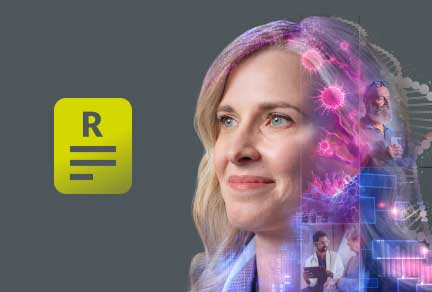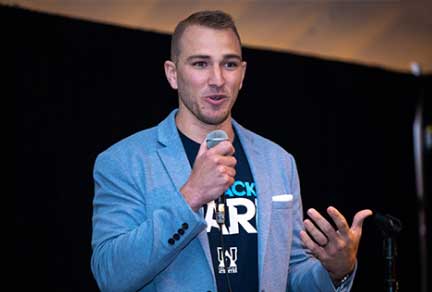Part 3: ‘Learnings from China: Managing in the time of pandemic’
| Interested in learning more about our lessons learned in China with COVID-19? Register for our upcoming webinar on April 23. |
Return to the new normal
For Parexel’s teams in China dealing with the COVID-19 pandemic, the return to the new normal feels like a ‘two-foot’ approach – one foot in the present, one in the future. The COVID-19 crisis is spurring the acceleration of innovations in a heavily regulated, traditionally risk-averse industry.
The COVID-19 crisis clearly demonstrated vulnerabilities in traditional clinical trials processes – from the simple ability of a patient or monitor to visit a site, to the supply chain for investigational therapies, to collecting vital trial data.
Creating a more resilient and patient-friendly clinical trial system
Learnings from COVID-19 have dramatically boosted interest in decentralized clinical trials (DCTs). Sometimes called virtual, remote, or site-less trials, DCTs are designed to reduce the travel burdens faced by patients; increase efficiency by moving from paper-based to electronic records; and reduce the need for in-person site visits.
In China we’re seeing a renewed interest among investigators, sites, and regulators toward DCTs – both fully virtual and hybrid approaches. They see the benefits in reducing the amount of face-to-face interaction required (social distancing in a clinical setting) and the time and cost of traveling.
Traveling 400 kilometers each way for a site visit
We discovered a brilliant example of the travel burden put on patients in a review of the impact of COVID-19 on a Parkinson’s disease study in China. A patient in that study had been traveling 400 kilometers each way for a site visit. Imagine how much easier his or her life would be if we could reduce those visits, even one, by using remote techniques.
In February, Parexel commissioned independent research to get the biopharma industry’s view on the benefits and barriers of DCTs. Here’s what we learned:
The biggest benefit: Improved patient experience
- Less burden for travel, especially for patients who are not close to a study site
- Less disruption of daily life – work, school, etc.
- Improved patient recruitment and retention
The biggest barrier: Validated virtual technologies
- Need for patient-physician interaction
- Concerns for data privacy
- Regulatory acceptance of virtual data collection
It’s clear that COVID-19 is accelerating the move toward DCTs and related or other remote processes, such as site initiation, source document verification and DDM (data-driven monitoring).
Real-world studies in the age of COVID-19
Real-world studies (RWS) are another tool that is gaining interest as a result of the pandemic. We are working with clients to use RWS to speed the analysis of already approved products for possible efficacy against COVID-19. These types of studies augment rigorous but time-consuming randomized clinical trials and observational-type compassionate use of investigational therapies on severely ill patients.
Flexibility in conducting studies during extreme situations like this, with proper regulatory approval and oversight, demonstrates RWS/RWE’s power to provide insights while allowing doctors and nurses more time to help patients.
Strong leadership is a critical success factor when running multiple types of trials during an outbreak. A prime example is the Ebola PALM study, in which several hundred Ebola trials began within a few weeks' time. The World Health Organization, the National Institutes of Health, and the Democratic Republic of the Congo provided much needed leadership which provided order in the chaos of a rapidly unfolding outbreak.
Wearables and sensors
With the increase in DCTs, we also expect accelerated use of wearable and sensors as a result of COVID-19. They provide benefits in the areas of:
- Patient engagement, where wearables and sensors can provide near real-time feedback on physiological signs and/or quality of life. Some devices even provide patients with readings about their health improvement, which formerly would have required a site visit.
- Site engagement, with sites having access to patient results outside of site visits. They can review near real-time data – and allow even daily reviews of the investigational therapy’s effects on a patient. Using wearables/sensors, the number of site visits can be reduced, and the site can book visits ad hoc based on at-home data.
- Sponsor engagement, by giving sponsors the ability to design trial endpoints based on near real-time continuous home-based data instead of more infrequent site visit-based data.
While regulations have not caught up the capabilities of wearables, there’s great potential in the use of wearables for typical endpoint assessments like the six-minute walk test.
This will empower sponsors to make early decisions with efficacy and safety endpoints. Parexel’s Patient Sensor Solutions supports the capture, transmission, and analysis of the vast quantities of data generated by connected sensor and device data while our Scientific Data Organization partners with leading regulatory-grade platforms to house, manage, and interpret real-world data.
The fourth and final article in this series is “Beyond COVID-19: The future of clinical research in a changed world”. It will examination COVID-19’s shock to long-established systems (governmental, healthcare, economic, etc.) and to us as individuals and implications for biopharma.
To learn more about our lessons learned in China with COVID-19, register for our April 23 webinar.
Related Insights
Podcast
Enabling Successful Sites, Episode 2: Empowering Sites to be More Inclusive Through Cultural Sensitivity Training
Jun 28, 2024
Blog
Preparing for a new era in European Market Access
Jul 22, 2022
Article
Can Chinese Phase I data from the West accelerate China drug development?
Mar 17, 2021
Article
Six top tips to prepare for the new EU Clinical Trial Regulation
Apr 13, 2021
Article
Tencent-Backed Wedoctor Is Going Public: What Are the Next Steps for Chinese Digital Health Companies?
Jun 30, 2021
Article
India, the Generic Manufacturing Powerhouse, Biosimilar Next?
Jul 21, 2021
Article
Evidence Generation Strategy under Germany’s Digital Healthcare: Is More Better?
Aug 6, 2021
Blog
Highlights from ISMPP Asia Pacific Meeting 2021
Sep 20, 2021
Blog
What COVID Taught Us About Focus, Innovation, and Leadership
Sep 24, 2021
Whitepaper
Master Protocols from Design to Delivery
Sep 30, 2021
Article
Expedited Pathways Comparisons - US EU CHN
Oct 19, 2021
Video
Biotech Showcase: Fireside Chat with Jamie Macdonald
Jan 3, 2022
Related Insights
Podcast
Enabling Successful Sites, Episode 2: Empowering Sites to be More Inclusive Through Cultural Sensitivity Training
Jun 28, 2024
Blog
Preparing for a new era in European Market Access
Jul 22, 2022
Article
Can Chinese Phase I data from the West accelerate China drug development?
Mar 17, 2021
Article
Six top tips to prepare for the new EU Clinical Trial Regulation
Apr 13, 2021
Article
Tencent-Backed Wedoctor Is Going Public: What Are the Next Steps for Chinese Digital Health Companies?
Jun 30, 2021
Article
India, the Generic Manufacturing Powerhouse, Biosimilar Next?
Jul 21, 2021
Article
Evidence Generation Strategy under Germany’s Digital Healthcare: Is More Better?
Aug 6, 2021
Blog
Highlights from ISMPP Asia Pacific Meeting 2021
Sep 20, 2021
Blog
What COVID Taught Us About Focus, Innovation, and Leadership
Sep 24, 2021
Whitepaper
Master Protocols from Design to Delivery
Sep 30, 2021
Article
Expedited Pathways Comparisons - US EU CHN
Oct 19, 2021
Video
Biotech Showcase: Fireside Chat with Jamie Macdonald
Jan 3, 2022



